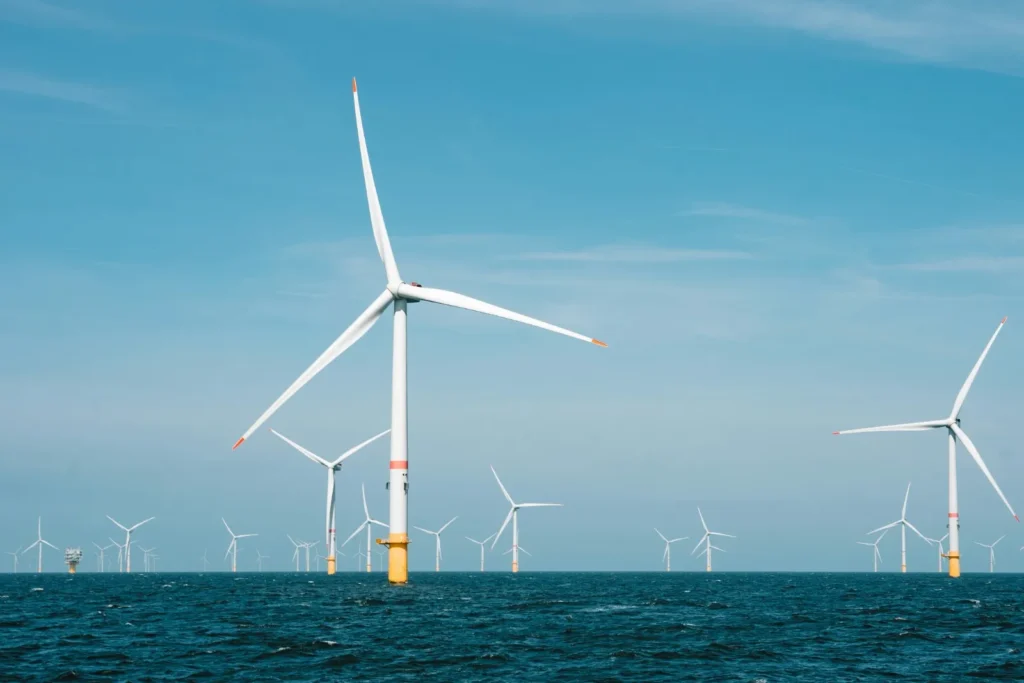Global Offshore Wind 2025: new headwinds bring new opportunities for the industry

By Paul Noonan, Content and Insight Director, Aspectus Group
Global Offshore Wind 2025 brought together leading innovators in the field at a time when the sector is being buffeted by a trifecta of regulatory uncertainty around offshore wind, rising supply chain costs and the rolling back of policy incentives. The industry is entering choppy waters with several UK projects suspended or cancelled amidst rising costs and supply chain shortages, a series of US projects paused awaiting the outcome of court battles, and several energy giants recently cooling towards the sector.
Yet every period of flux also brings new opportunities. Dual demands for cost efficiencies amidst economic and regulatory uncertainty and an accelerated rollout of renewables in regions such as Europe is spurring a new wave of industry innovation. A pro-renewable Labour government is seeing traditional oil and gas strongholds such as Aberdeen accelerate their pivot towards offshore wind while new European regulations are driving demand for faster emissions reductions. Here are just some of the parallel risks and opportunities that emerged from the event.
Economic pressures disrupt offshore wind growth
One of the key themes to emerge from discussions was that the industry is facing a series of strong economic headwinds from rising interest rates to a supply chain squeeze affecting everything from materials to installation fleets. This has seen major offshore wind projects halted or cancelled across US and UK waters.
However, this also presents an opportunity to communicate the benefits of innovations that can unlock efficiencies by, for example, reducing supply chain costs. Expert communications can help tie these innovations to topical market challenges, ensuring they engage those that stand to benefit from them. News of rising development costs offers a platform to publicly promote innovations in everything from Manufacturing 4.0 to installation methods that could streamline supply chains.
Uncertainty in US and UK offshore wind regulation
Investments in the US are stalling as the industry awaits court challenges to the Trump administration’s freeze on permits and leases for offshore wind, and a new bill being considered by Senate Republicans that could scrap wind subsidies. Amidst this uncertain regulatory climate, ESG is also facing its greatest ever challenge with over half of financial services professionals expecting their leadership to deprioritise ESG over the coming year. Several companies attending GOW noted that their US expansion plans are on hold as they wait for the dust to settle. In the UK, too, there is concern over potential rule changes to open offshore wind projects to the cold winds of competition by allowing companies to compete for future Contracts for Difference allocation rounds without planning consent.
Instead of retreating and leaving themselves at the mercy of looming regulatory decisions, organizations could raise their voice through the media to promote the benefits of offshore wind to policymakers. For example, case study outcomes could be combined with public data to create white papers and articles estimating the economic benefits that the US would reap from creating domestic offshore wind supply chains.
Emerging regulatory drivers boost innovation
Conversely, regulations are also driving growing demand for green energy innovations in some regions such as Europe where the Regulation (EU) 2024/1787 has mandated methane emissions reductions. This is accelerating the shift towards renewables and innovations in methane Measurement, Monitoring and Verification (MMV) such as drone technologies, some of which were on display at the conference.
The triple whammy of a ban on new oil and gas licenses, rises in windfall taxes and National Insurance in the UK has similarly accelerated the pivot towards offshore wind in former fossil fuel powerhouses such as Aberdeen.
Why cutting marketing budgets may backfire
Some companies are also responding to the turbulent climate by reducing PR and marketing budgets. Yet this is the equivalent of reacting to a change in wind direction by stopping the boat instead of trimming your sails to harness the new prevailing wind. Weathering the current storm will ultimately hinge on the ability of companies to adapt their brands and messages to the emerging economic and regulatory climate – and expert communications is crucial to this effort. In the current landscape, PR and marketing are more vital than ever before to pivot communications strategies to the latest trends, publicly aligning products or services with new economic challenges or regulatory objectives.
Some companies are even cutting costs by using Artificial Intelligence (AI) to write marketing content such as White Papers. Yet caution is needed when using AI tools for confidential corporate content, as some platforms may retain user inputs to improve their models unless appropriate safeguards are in place. Crucially, because Large Language Models (LLMs) are widely used and lack the human gift of lateral thinking, there’s a risk that corporate messaging could become generic and lost amidst a saturated sea of computerized content. Without strategic oversight, companies may even find themselves echoing messaging already in market – reducing cut-through and credibility.
Combining out-of-the-box thinking with access to private client information allows communications professionals to develop original, insightful content anchored in an organization’s specific offerings. This allows human writers to understand a client’s real unique selling points and marry this with media knowledge to create distinctive, topical communications designed to fill the ‘white space’ in the industry conversation.
A windmill, not a weathervane: How expert marketing can harness headwinds as opportunities
In the current climate, it can be difficult for the renewable industry to know which way the wind is blowing. Yet instead of being like a weathervane blown about by the changing economic and regulatory winds, expert communications can help the industry become like a windmill which harnesses these forces as fuel. Companies could harness communications to link their innovations to emerging trends from rising supply chain costs to reshoring and add their voice to the regulatory debate.
Rising development costs can be used as an opportunity to publicly promote innovations to streamline construction and installation. Ill-informed debates around renewable subsidies call for a new communications effort to make the case for offshore wind’s contribution to communities as well as the climate. New emissions targets open a space to publicize developments in emissions monitoring and measurement across energy lifecycles.
Key takeaways
What economic challenges does offshore wind face in 2025?
Rising interest rates, inflation, and scarce skills and resources are causing project delays and cancellations across the US and UK offshore wind markets.
How are regulations affecting offshore wind expansion?
Regulatory uncertainty in the US and potential rule changes in the UK are stalling investments, yet new EU regulations are driving demand for emission-reducing innovations.
How can offshore wind companies adapt to these challenges?
By harnessing proactive and adaptive communications, highlighting innovations that address supply chain challenges, and advocating benefits to policymakers, companies can thrive amid uncertainty.
About the author
Paul Noonan, based in our London office, is Content and Insight Director and creates campaigns carefully crafted to maximize reputations and reach targeted audiences with meaningful, credible, educational content. His writing has won coveted industry awards, engaged high-level audiences, and featured in leading publications from Reuters and Forbes to the Times. He harnesses intelligent insight to delve into client data and deliver smart campaign strategies, storylines, brand positioning and hero content that delivers standout success for clients.
Related News
-

Why insight, not identity, builds stronger energy brands
November 13, 2025 -

Marketing budget cuts? Drive ROI with creativity
November 12, 2025